Induced Emf and Induced Current
The induced emf and induced electric current are two different terms. By varying, the magnetic field one can generate both induced emf and induced current but current will be induced if there is a path for the electrons to flow otherwise not.
Download the pdf notes of Induced Emf and Induced Current Class 12 Physics
What is the difference between Induced Emf and Induced Current?
When a conductor is moved across a magnetic field, a current starts flowing through the conductor. The current generated in the conductor is called Induced current and the emf produced is called Induced emf.
A straight piece of wire of length l is placed in the magnetic field of a permanent magnet with a sensitive galvanometer connected with it. This forms a closed path or loop without any battery.
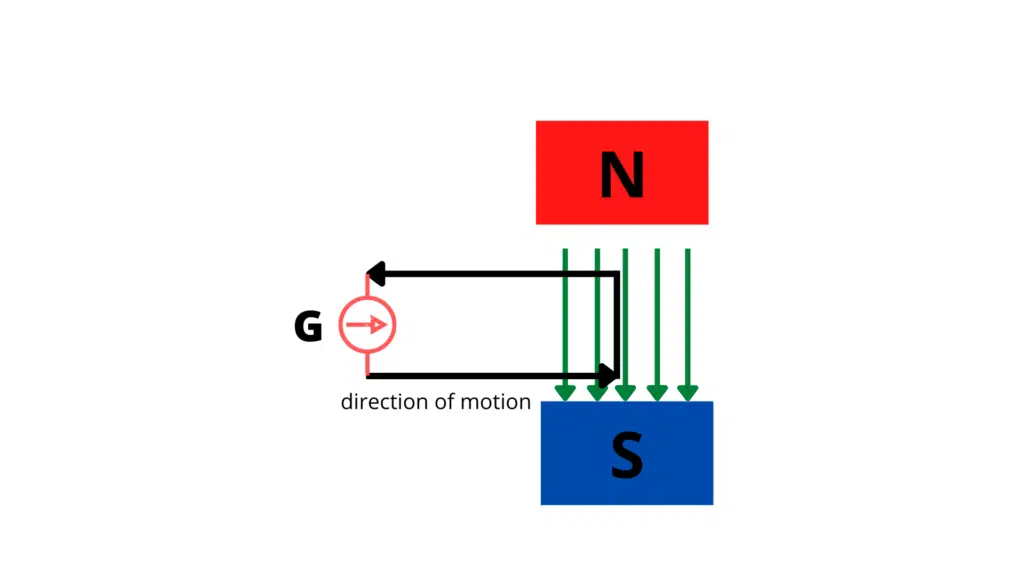
The galvanometer shows deflection whenever the loop is moved in the magnetic field from left to right or from right to left, otherwise, it shows zero deflection.
The direction of deflection of the galvanometer depends upon the motion of the loop. This current is known as the Induced Current.
Dependence of induced current:
The induced current depends upon;
1. Speed of the loop (in a magnetic field).
2. Resistance ‘R’ of the loop.
What is Induced emf?
By inserting different resistances ‘R’ in the loop and moving with the same speed in the magnetic field, it was found that the product of induced current ‘I’ and the resistance ‘R’ remain constant.
IxR = Constant
This constant is known as the “Induced emf“. This induced emf is responsible for the induced current when the circuit is closed. the direction of induced emf can be determined by Lenz’s Law.
Factors increasing induced current:
The induced current can be increased by
1. Using a strong magnetic field
2. Moving the loop faster
3. Using a cod of many turns
The induced current can be produced by the relative motion of the magnet or the loop. By moving either the loop or the magnet.
Cause of induced current
Due to the relative motion of the magnet or the loop, the magnetic flux through the loop changes which produces the induced emf and hence the induced current, Thus, the greater the rate of change of flux, the greater the induced emf.
Methods to produce induce emf
There are some other methods described below in which Emf is induced in a loop by producing a change of magnetic flux through it
Relative Motion Of Bar Magnet & Coil of Wire:
A bar magnet and a coil of wire to which a galvanometer is connected.
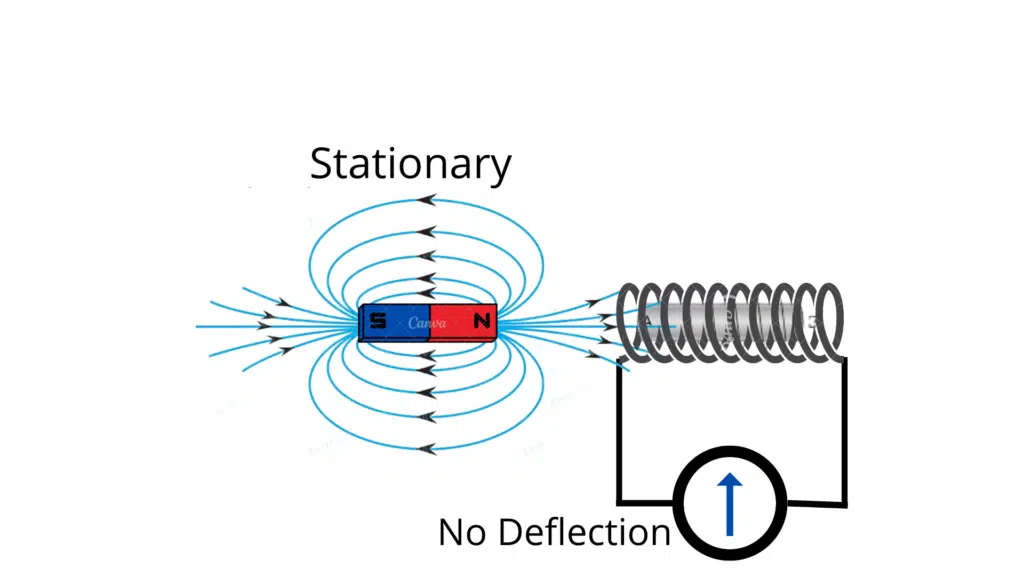
The galvanometer only shows deflection when there is a relative motion between the magnet and the coil this is called motional emf, otherwise, it shows no deflection.
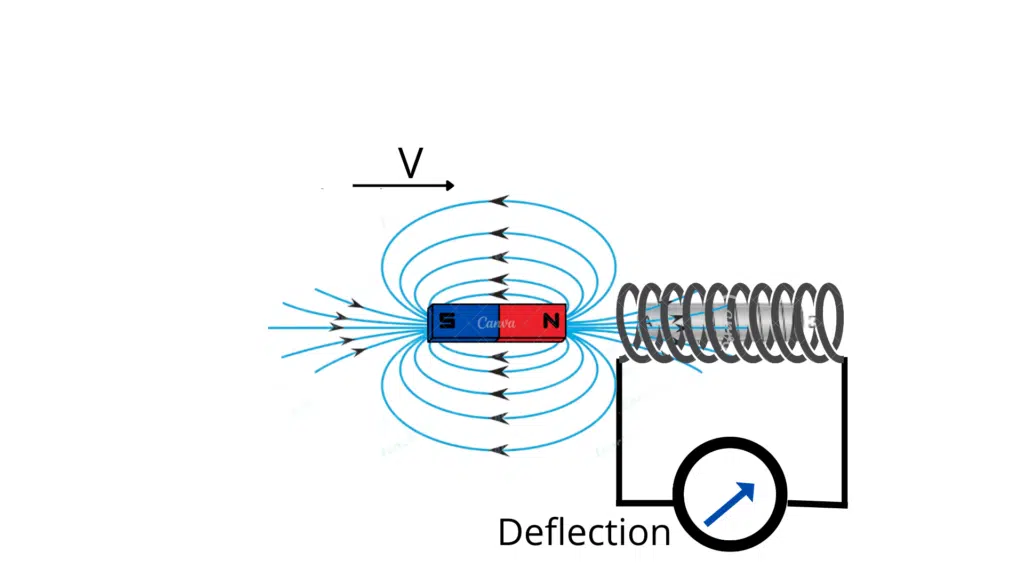
During the motion of the coil or the magnet, the magnetic flux through the coil changes, and this changing flux produces the induced current in it.
Changing Area of Coil:
This shows that no current is induced in the coil of the constant area that is placed in a constant magnetic field. However, when the coil is distorted (or pulled) so as to reduce its area, an induced emf and hence current appears.
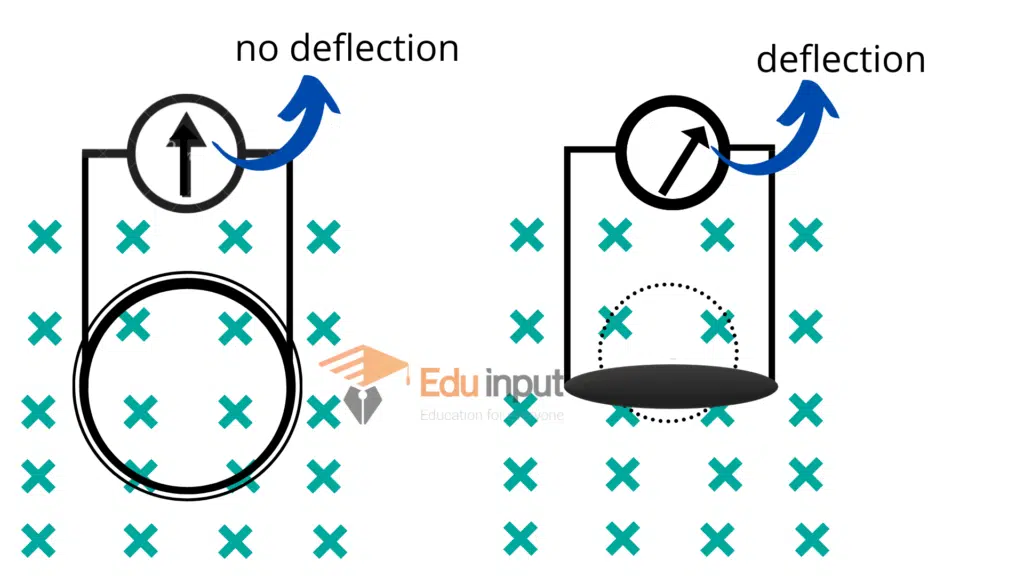
If the distorted coil is brought to its original circular shape thereby increasing the area, an oppositely directed current is induced which will last as long as the area is changing.
Rotating The Coil:
When a coil of the constant area is rotated in a constant magnetic field, an induced current is generated. The induced current is produced due to the change of magnetic flux. This is the basic principle used in electric generators.
Mutual induction:
The phenomenon in which a changing current in one coil induces an emf in another coil is called Mutual Induction.
There are two coils placed side by side. The coil ‘P’ is connected in series with a battery, a rheostat, and a switch.
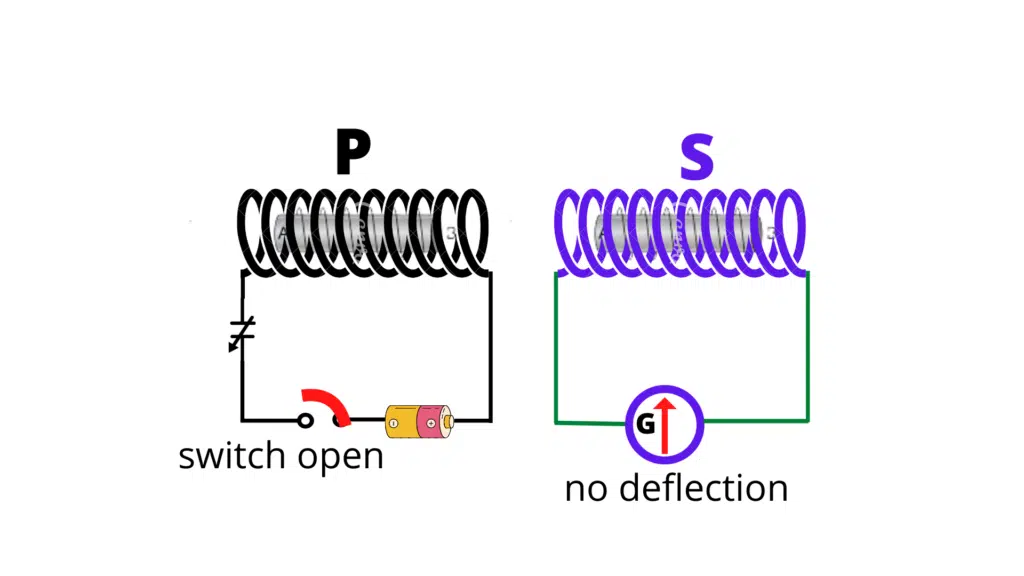
While the other coil ‘S’ is connected to a galvanometer only. If the switch of coil ‘P’ is suddenly closed, a momentary current is induced in coil ‘S’.
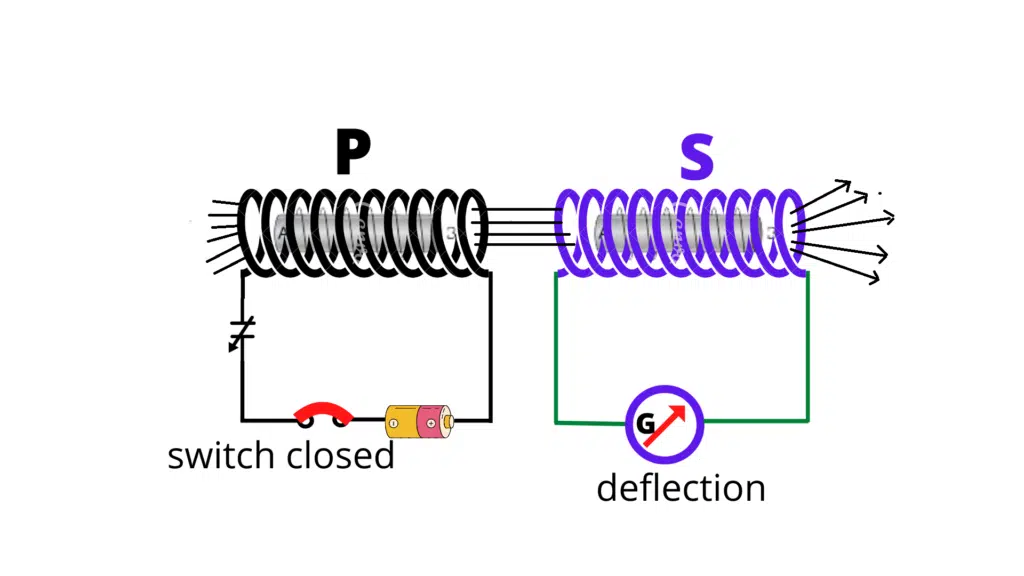
This is indicated by the galvanometer, which suddenly deflects and returns to zero. No induced current exists in coil ‘S’ as long as a constant current flows in coil ‘P’. When the switch is closed, the current grows from zero to maximum and comes down to zero when the switch is opened.
This change of current in coil ‘P’ also changes the magnetic flux associated with it. This changing flux is linked with coil S which causes the induced current in it. The current in coil P can also be changed with the help of rheostat
Electromagnet:
A coil is placed in the magnetic field of an electromagnetic, both initially at rest. The magnetic flux through the coil is changed by changing the current of the electromagnet, thus producing induced current in the coil.
Related FAQs
What is the meaning of induced emf and induced current?
The difference between induced emf and induced current is an induced current has a direction in which the field of the magnet is opposed to the change in the magnetic flux that causes the current. It’s the same thing as the saying of different scientists. It is said that an emf will act to oppose the change that produces it.
What are the two factors on which induced current depends?
These are the two factors on which induced current depends
Speed of loop.
Resistance of loop.
Is induced emf and induced current the same?
The induced emf and induced current are not the same. The field that produces the current is the changing field. Since a source emf is always needed to produce a current, the coil behaves as if it were a source of emf.


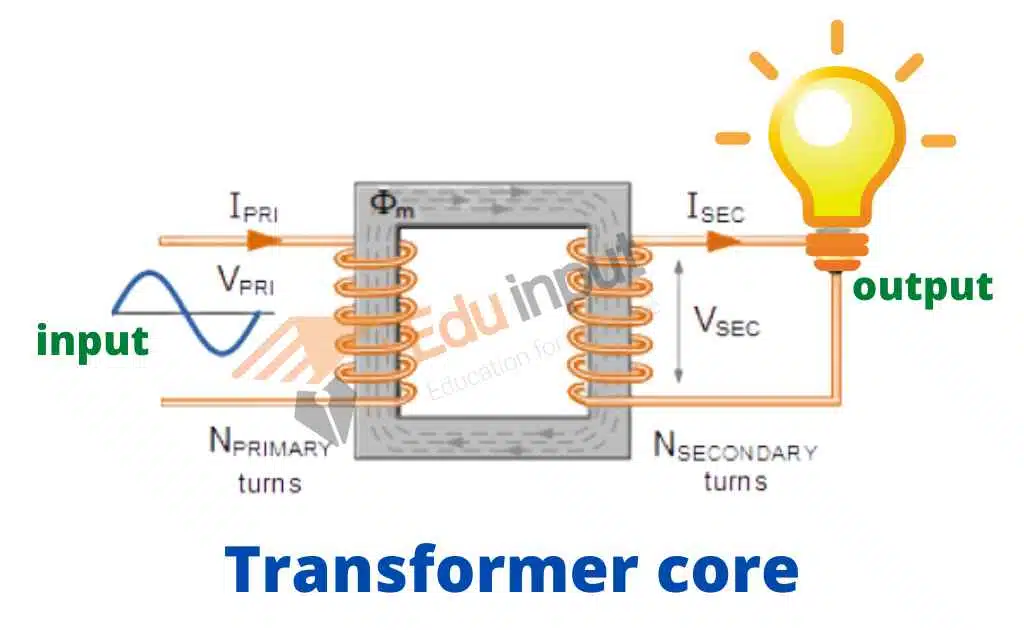




Leave a Reply